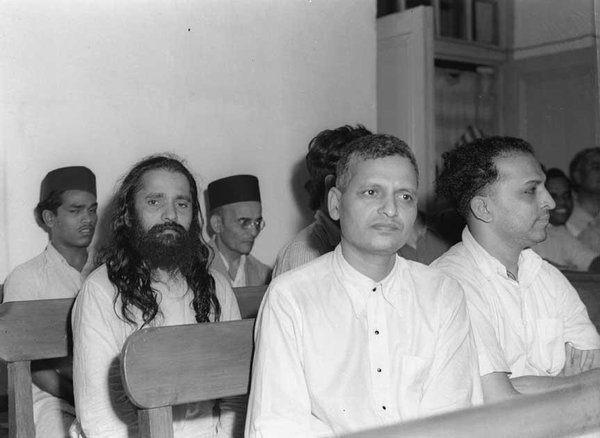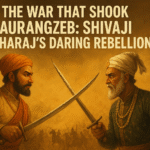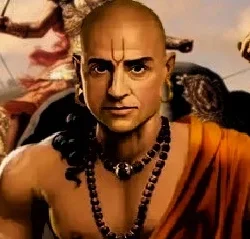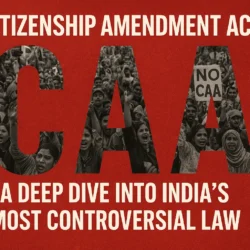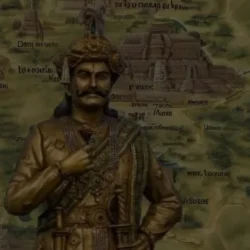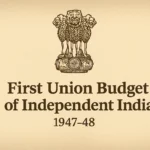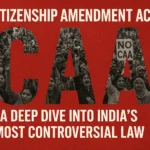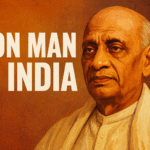📌 Disclaimer
This article presents a historically documented account of Nathuram Godse’s 1949 courtroom statement, contextualized within India’s political landscape after independence. The content has been reframed for educational and analytical purposes only. The interpretations and claims originally made by Godse are examined, not endorsed. Readers are encouraged to approach this discussion with a critical understanding of the turbulent politics of that era.
Introduction
The assassination of Mahatma Gandhi on 30 January 1948 remains one of the most defining and tragic moments in modern Indian history. During his trial, Nathuram Godse, Gandhi’s assassin, delivered a lengthy courtroom statement to explain his motivations. His speech reflected the political polarization, communal tensions, and ideological conflicts of late British India and the creation of a divided nation.
Historians study Godse’s statement not just as a justification. They use it to understand how religious identity, nationalism, and the trauma of Partition collided in many Indian minds at that time.
Section 1: The Political Context Behind the Assassination
Godse’s courtroom statement began with an exploration of the political landscape of pre-independence India. He traced the roots of his disillusionment to what he perceived as the Congress Party’s failure to strike a balance between religious equality and national integrity.
He argued that Hindustan was the only homeland for Hindus, while Muslims already had spiritual and cultural ties outside India. According to his interpretation, the Congress—founded to establish democracy and unity—had gradually allowed British policies of “Divide and Rule” to foster separation through concessions, such as the introduction of communal electorates in 1906.
Godse acknowledged the Congress’s founding ideals of equality and representation. He believed that later compromises with the Muslim League eroded these principles. To him, this eventually paved the way for Partition.
From his viewpoint, the rise of the Muslim League and the political encouragement it received both from British administrators and Indian moderates reflected the weakness of India’s leadership in confronting communal politics.
This contextual framework reveals that his grievance was not personal or religious, but primarily political—rooted in the post-colonial struggle to define India’s national identity.
Section 2: Godse’s Ideological Worldview and Critique of Gandhi
In his statement, Godse identified Mahatma Gandhi’s leadership as the turning point that, in his opinion, altered the Congress’s course. He acknowledged Gandhi’s personal virtues—truth, simplicity, and non-violence—but contended that these ideals, when rigidly applied, became impractical for statecraft.
Godse cited Hindu epics to argue that violence used in self-defence or for justice could be morally justified, invoking historical figures like Lord Rama, Lord Krishna, Shivaji Maharaj, Rana Pratap, and Guru Gobind Singh as defenders of dharma. Gandhi’s denunciation of these warrior-heroes, he claimed, alienated those who viewed them as protectors of Indian civilization.
To Godse, Gandhi’s concept of unconditional non-violence seemed disconnected from political realities—particularly in the face of Partition-era atrocities and mass displacement. He accused Gandhi of excessive concessions toward Muslim leaders, interpreting his repeated appeals for reconciliation as appeasement rather than statesmanship.
Historians, however, view this argument within the larger frame of Gandhi’s moral politics. Gandhi envisioned a multi-faith, non-violent India, where tolerance could outlast the cycle of retribution. Godse’s rejection of this ideal underscores the ideological schism between moral idealism and militant nationalism that defined the late 1940s.
Section 3: Gandhi’s Political Journey and the Khilafat Compromise
In his retrospective account, Godse divided Gandhi’s political life into three phases:
- 1915–1939 / 40: Gandhi’s rise as the national leader uniting India against British rule.
- 1939–1947: The period of wartime negotiations and the road to Partition.
- Post-Partition (1947–48): Gandhi’s final months, marked by his fasts for communal peace.
Godse’s main criticism focused on the Khilafat Movement of 1920–21, when Gandhi supported Muslim leaders seeking to preserve the Ottoman Caliphate. Godse saw this alliance as a strategic misstep that brought religion into nationalist politics. The subsequent Moplah Rebellion in Malabar, marked by communal violence, deepened his conviction that Gandhi’s attempts at unity had failed.
Over time, he believed that Gandhi’s generosity toward Muslim demands—including promises of political concessions—encouraged separatism rather than reconciliation. For Godse, the demand for Pakistan in 1940 symbolized the ultimate betrayal of Gandhi’s vision of unity.
This interpretation, while central to his defense, oversimplified the political realities. Many historians note that Gandhi’s alliance with the Khilafat leaders was an early experiment in inter-communal solidarity against British imperialism, not an endorsement of religious politics.
Section 4: Partition, Compromise, and Disillusionment
By the mid-1940s, communal divisions had reached a breaking point. The “Quit India” movement of 1942, followed by the Mountbatten Plan of 1947, left India divided into India and Pakistan. The unprecedented migration, massacres, and humanitarian crisis that followed shattered millions of lives.
In his speech, Godse viewed these events as the collapse of Gandhi’s vision of Hindu-Muslim harmony. He described the payment of ₹ 55 crore to Pakistan and Gandhi’s fast in its support as the final act of betrayal. To him, these decisions symbolized the failure of leadership and the subordination of national interest to moral persuasion.
From Godse’s perspective, Gandhi’s continued insistence on non-violence and reconciliation—despite widespread suffering—proved intolerable. His disillusionment culminated in the fatal act of 30 January 1948, an event that he claimed was politically motivated but which shocked an entire nation.
Modern historians interpret these claims as a tragic manifestation of post-Partition trauma, where anger and loss found expression in violence rather than dialogue.
Conclusion: A Tragic Collision of Ideals
Nathuram Godse’s final courtroom statement offers a window into the conflicted psychology of India’s independence generation. His words reflected not only personal conviction but also the larger national trauma of identity, faith, and disillusionment that accompanied freedom.
While Gandhi’s ideal of absolute non-violence sought to rise above religious divides, Godse represented the growing segment of society that saw such ideals as impractical in a fractured nation. The clash between these visions—moral pacifism versus assertive nationalism—defined one of the most painful chapters in India’s modern history.
Gandhi’s assassination was not merely the silencing of a man but the eruption of an unresolved ideological struggle that continues to shape India’s political discourse.
